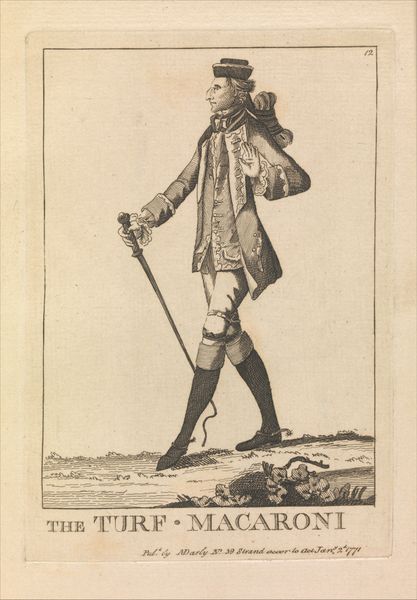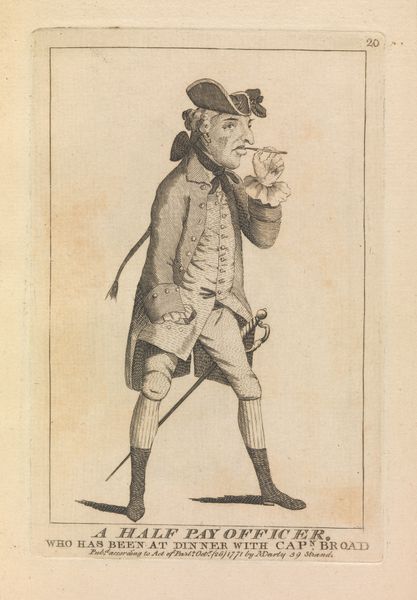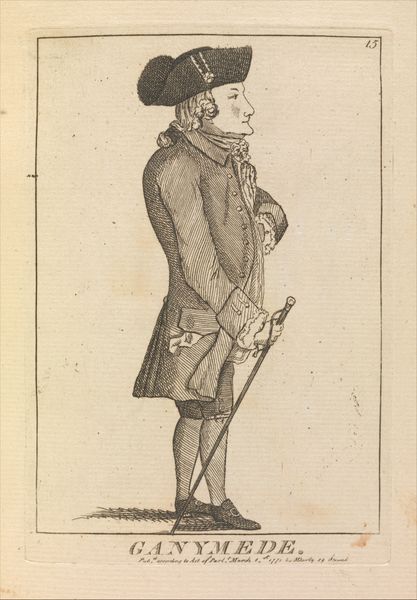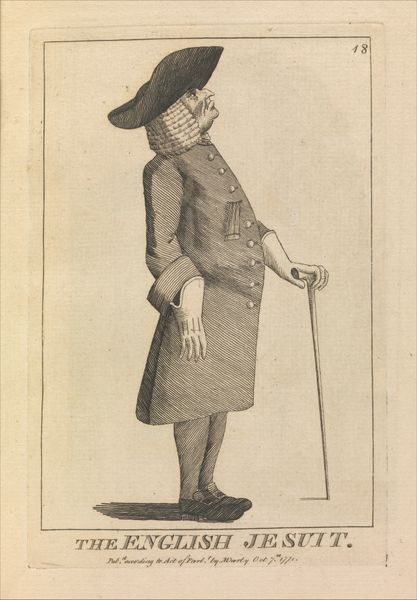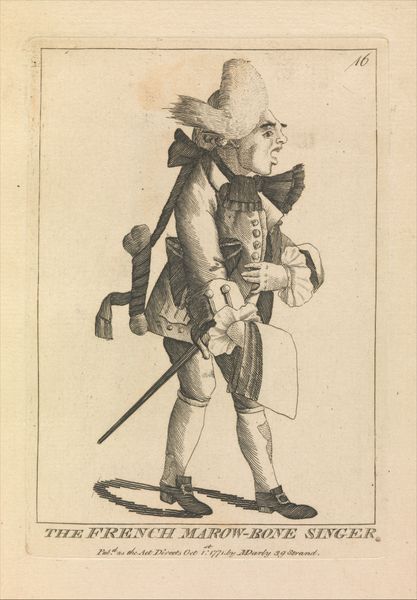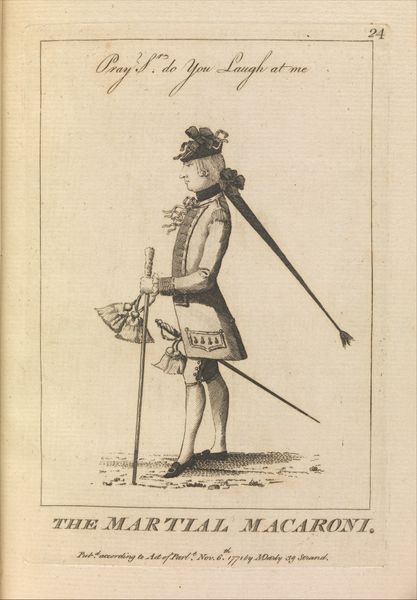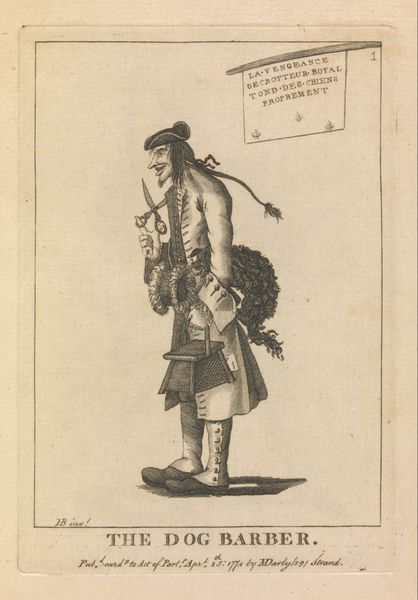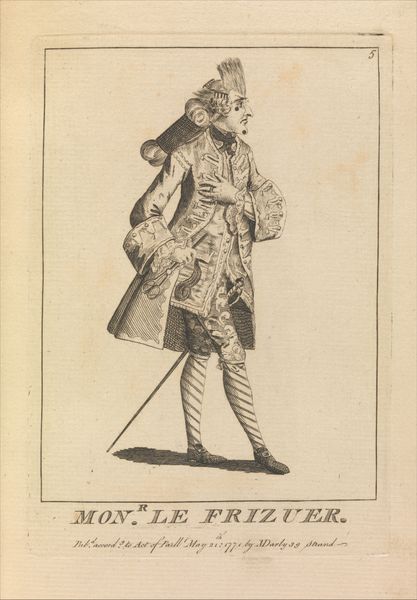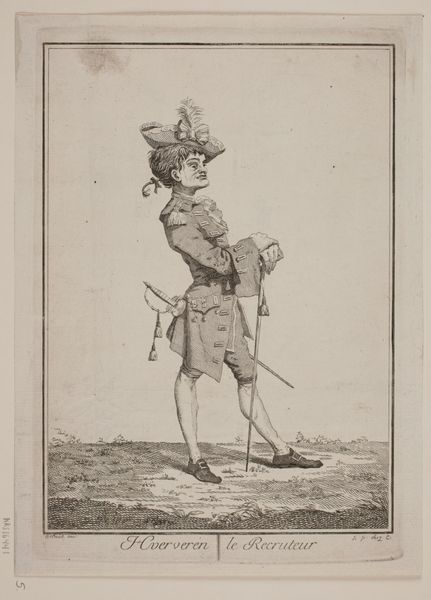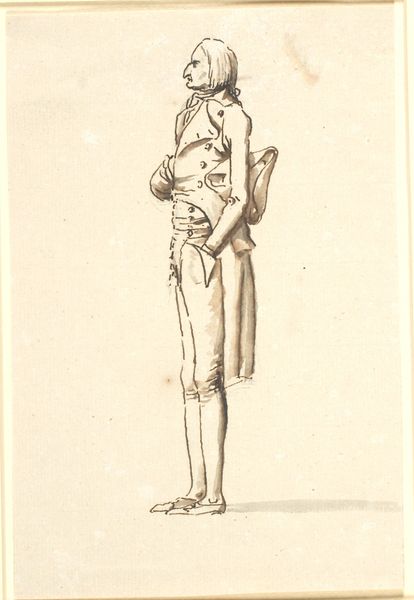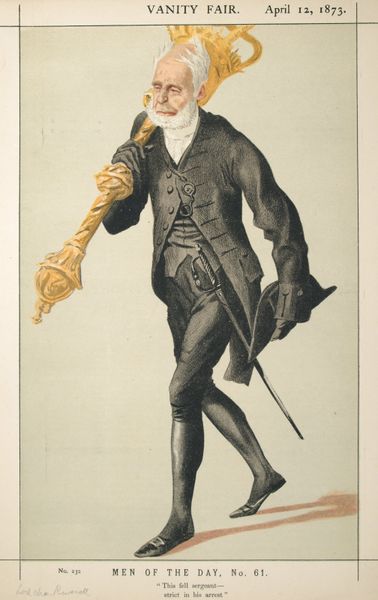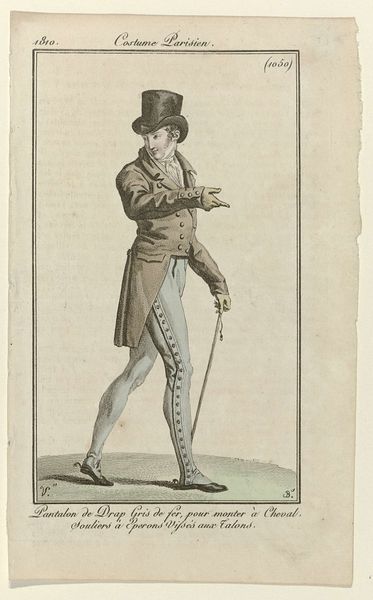
drawing, print, engraving
#
portrait
#
drawing
# print
#
caricature
#
15_18th-century
#
men
#
engraving
Dimensions: plate: 6 3/16 x 4 3/16 in. (15.7 x 10.7 cm) sheet: 8 13/16 x 5 7/16 in. (22.4 x 13.8 cm)
Copyright: Public Domain
Editor: This is "My Lord Tip-Toe Just Arrived from Monkey Land," a 1771 print by Matthew Darly, currently held at the Metropolitan Museum of Art. It's a caricature, an engraving of a slender gentleman in a very elaborate outfit. What's your interpretation of this piece? Curator: This print, with its pointed satire, speaks volumes about 18th-century British society and its anxieties surrounding class, status, and, more broadly, colonialism. The figure’s exaggerated features, along with the suggestive title, hint at anxieties about racial others and their place in the rigidly hierarchical social order. Editor: "Monkey Land?" That sounds like pretty blunt racism. Curator: Exactly. The print leverages racist tropes connecting people of color to primates, prevalent in that era to justify colonialism and slavery. Darly uses caricature, a popular form at the time, to critique what he saw as social climbing and perhaps even perceived threats to the established social order. It makes you wonder who "Lord Tip-Toe" might represent. Do you see anything in his clothing or posture that reinforces these ideas? Editor: Well, his pose is awfully prissy, and the decoration on his clothing looks gaudy. Maybe Darly is suggesting he is vulgar and an imposter. Curator: Precisely. The overdressed figure might represent someone newly rich trying to emulate aristocratic fashion, yet failing to capture its true essence, becoming a mockery instead. This links to concerns about who belongs and who doesn’t, who has the right to power and status. What do you think about this as a form of social commentary? Editor: It’s pretty harsh, but definitely effective. It's a reminder that art can reflect—and reinforce—problematic social attitudes. It also makes you wonder who Darly was aiming this at? Curator: It gives us insight into the uglier side of history, inviting a critical view of its values and beliefs. I see this piece as not just art but historical evidence that connects art history with contemporary discussions about identity and representation. Editor: Thanks, I hadn't considered the broader context of this era and this specific, and quite harmful, trope. Curator: These caricatures act like a mirror reflecting social hierarchies and insecurities, inviting conversations that promote equality and fight injustice.
Comments
No comments
Be the first to comment and join the conversation on the ultimate creative platform.
